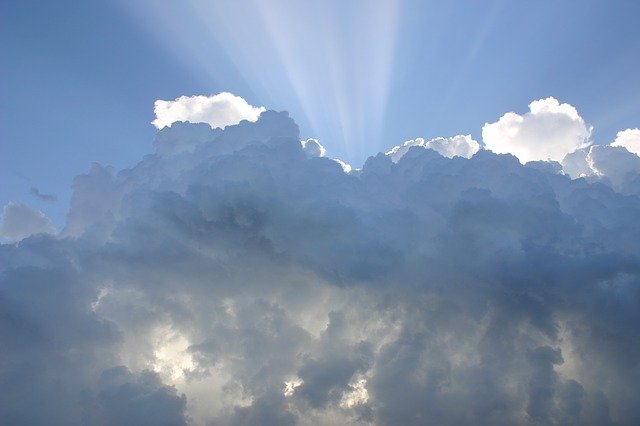Clouds are formed like?
The sky’s clouds are high; some are low, 10 km high, only tens of meters low. The cause of cloud formation is very much, mainly due to moist air rising. During the evaporation, as the air pressure decreases with height, its volume expands. In the process of expansion, it must consume its heat. Thus, the air both rises and decreases the temperature. As we all know, air to contain water vapor has a certain limit under specific temperature conditions, which limits the maximum amount of steam that a unit volume of air can hold relative to the pressure of the steam, which is called saturated steam pressure.
The saturated steam pressure will decrease with decreasing air temperature. The higher the air gets, the lower the temperature, the less the saturated steam pressure will drop. When the saturated steam pressure in the airdrops to the point where the required steam pressure is, a part of the steam will cling to the dust particles that condense to form tiny water droplets (when the temperature is low. more than 0 ° C may form ice crystals). These water droplets have a very small volume, called cloud droplets in the cloud. Their average radius is only about a few micrometers, but the concentration is very large, the speed of falling in the air is very low, can be supported by air currents, so it floats in the sky. How can wet air rise from clouds? There are several main routes, as follows:
The first is thanks to the effect of heat. During the clear summer days, because the Sun shines strongly, the air layer’s temperature near the ground rises rapidly, the hot and mild air rises above. In summer, we often see clouds in the shape of a mountain or a tower due to the effect of heat.

The second is the surface slip effect. A “slip surface” in air refers to the intersection’s surface between hot and cold air layers. When warm and gentle air flies forward, cold and heavy air is hindered; the warm air will actively slide upwards on the cold air layer. The limit face is now called the warm limit face. When warm air slides up, thick, large clouds form. When the forward-moving cold air layer meets warm air, it will descend into the warm air layer and lift it. The limiting side is now called the cold side. The warm layer of air lying on top of the cold air produces dense clouds.
The third is due to the effects of the terrain. Mountain veins obstruct the stratosphere’s atmosphere, hills or highlands will be elevated, and the mountain slopes will form clouds or blind. The vertical turbulence effect of the air and the cold radiation effect of the night of wet clouds also cause water vapor in the air to form clouds.
No matter how clouds are formed because the droplets are very small, the speed of falling is slow, so it only needs a light air flow to help it, making clouds float in the air.




